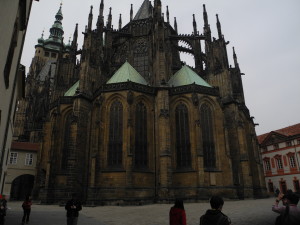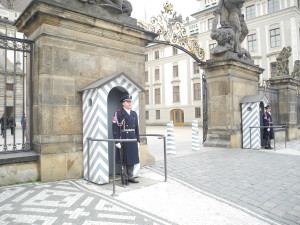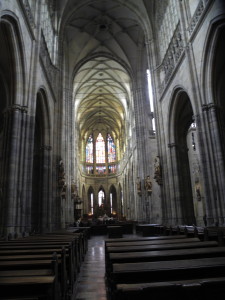When it comes to visiting European cities, I love old.
And you’ve got to love a city where the “New Town” section dates from the 14th century.
And where a section called “Lesser Town” has more going for it than many other cities can boast in total.
Prague, capital of the Czech Republic, dates from the ninth century with the construction of Prague Castle, which is now the largest occupied castle in the world — covering 16 acres, it’s actually more like a palace — and houses the offices of the Czech president as well as the country’s crown jewels.
The castle was once the seat of power of the vast Holy Roman Empire, which ruled central Europe for a thousand years.
While some of the most beautiful parts of the castle are open only to the president, not the public, touring the complex is still a must-see when in Prague. The country’s most important church — the beautiful Gothic-style St. Vitus Cathedral — is located on the grounds. It was built in 930 AD by Wenceslas, Duke of Bohemia, better known to many of us as “Good King Wenceslas” of Christmas carol fame. (Ironically, I’m told, Czechs aren’t really familiar with the song.)
Wenceslas was later murdered by his brother, and is buried in the church — along with a number of long-ago emperors and noblemen whose decomposing bodies were said to have inspired the “phrase “stinking rich.”
King (and emperor) Charles IV — who ushered in Prague’s first Golden Age in the 14th century (when he built “New Town”) — is also buried in the church. And it’s the site of the largest bell in the country — which takes four men to ring on special occasions.
But perhaps the most fascinating tidbit I picked up on my tour of Prague Castle was that this was the scene of a world-changing episode of defenestration — throwing a hapless victim out a window — that triggered one of Europe’s most brutal conflicts, the 30 Years War, which lasted from 1618-48.
Then ruled by the Catholic Habsburg family, Bohemia was also a simmering hotbed of emergent Protestantism, causing the emperor to close Protestant churches and, in turn, angering the populace. The defenestration episode — which resulted in two emissaries of the Catholic crown prince being tossed from an upper window and landing far below in piles of horse manure, assuring their survival (albeit messy) — ignited the war, resulting in more deaths proportionate to the population than any other in history, including World Wars I and II.
Ironically, the Czech Republic is now one of the least religious countries in Europe, with only about five percent of the population regularly attending church services.
I owe all these insights to a premier tour company called, appropriately, Insight Vacations, which hosted me and 30 other international journalists, bloggers, photographers and social media mavens on a trip from Prague to Budapest, via Cesky Krumlov (a medieval gem of a town) and Vienna.
The castle tour, our first as a group, was led by a knowledgeable local guide named Jaraslav, and overseen by our amazingly well composed tour director, Neira Milkovic, imported from her home in Split, Croatia. to herd around our diverse group, composed less of baby boomers than Gen Xers and Gen Yers, few of whom copped many Z’s during the late night socializing sessions in which tweets and instagrams flowed like the local pilsners to audiences around the world.
But even though Prague has been adopted by younger generations as a sort of latter-day version of what Paris was in the 1960s and early 1970s for boomers then coming of age, it holds plenty of appeal for travelers of all generations, and I’ll be anxious to return next year if all goes as planned.
I’ll have much more in the coming days and weeks about the adventures and discoveries of our merry band, who had come to experience Central Europe from Australia, New Zealand, Singapore, Malaysia, Indonesia, the Philippines, South Africa, Ireland, the UK, Canada, and the U.S.
Next up: Prague’s Old Town, New Town, Lesser Town, Charles Bridge and Jewish Quarter.















2 Responses to Prague: A Touristic Wonderland, Complete With Castle